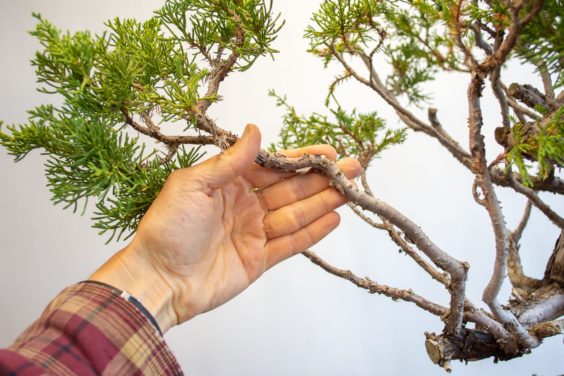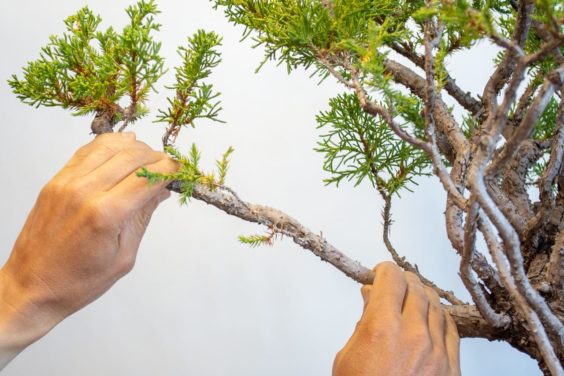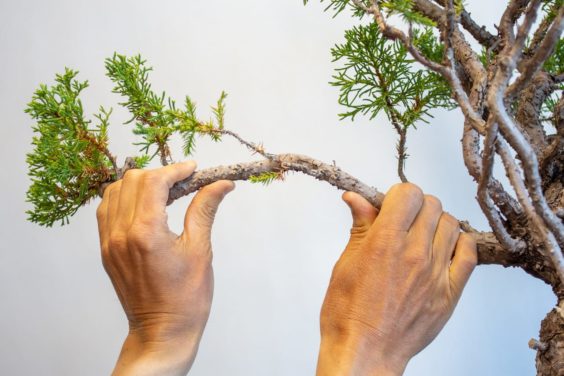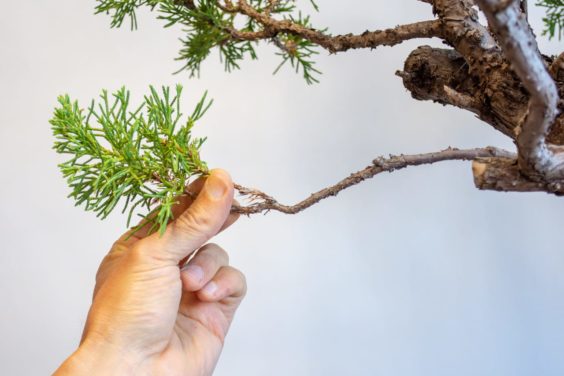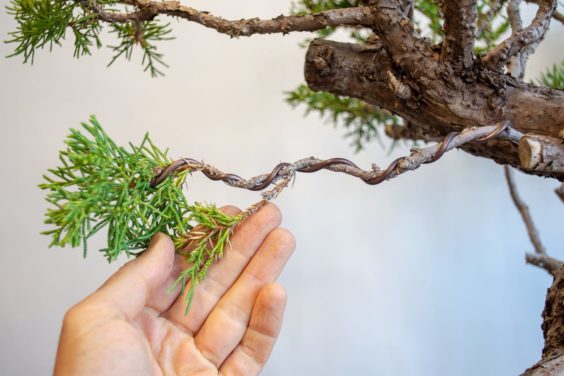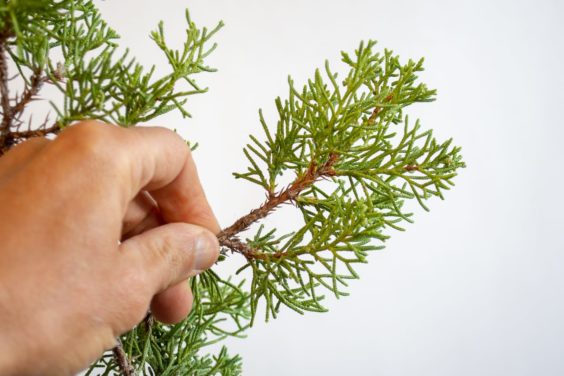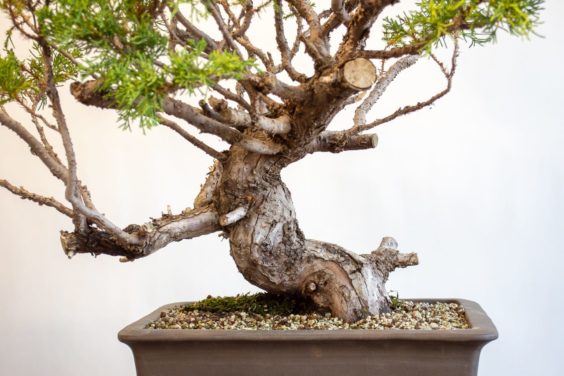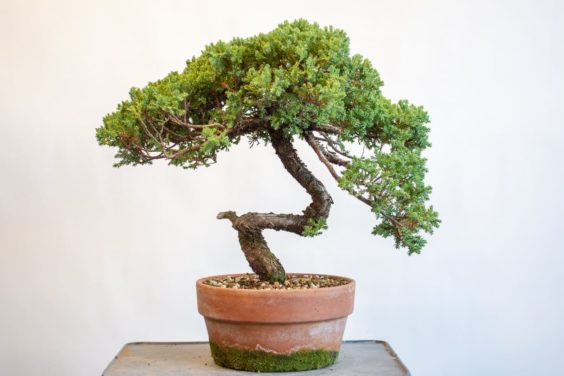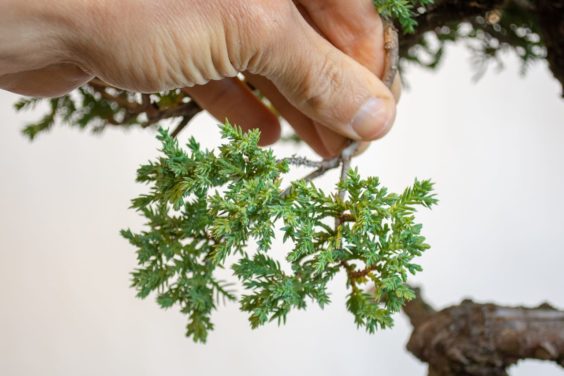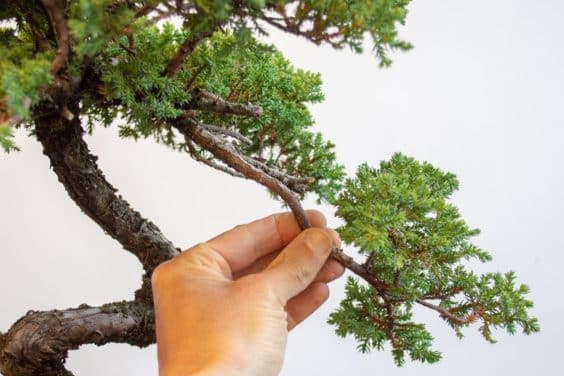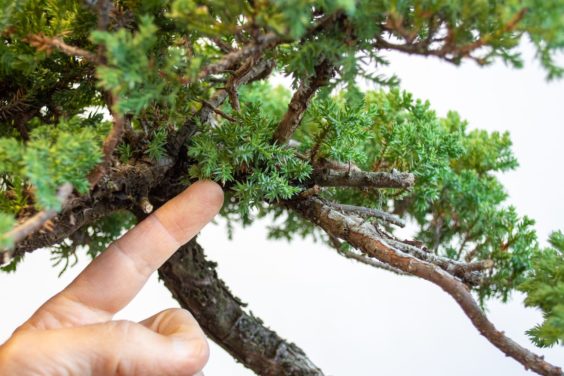Since repotting a neglected San Jose juniper last fall, I’ve been thinking about the tree’s options for future development. The main question is whether to work with the existing branches or graft new branches.
San Jose juniper
Whenever possible, I like to work with existing branches because it’s much faster to develop a tree by wiring than it is by grafting. The reason I hesitate to wire this tree is that most of the existing branches are coarse.
Thick branch
While coarse branches can be bent, the resulting bends aren’t always as compelling as bends made in slender branches.
Thick branch
Thick branch with a single bend
With thinner branches, I can add several bends in the same amount of space.
Slender branch
Several bends along a thin branch
The number of divisions along a branch is just as important as branch size. The above branches lack side branches and extend a long way from the trunk before dividing. As a result, neither are good candidates for use in the final design.
What I’d most like to use are slender branches with good secondary or tertiary structure.
Young branch with the beginnings of secondary branches
As the goal for this tree is to make it more compact, such young branches would be great for defining the tree’s silhouette.
Trunk detail suggesting future height of the tree
Without these branches, this juniper is a great candidate for grafting. And with that decision made, the next step will be deciding what kind of foliage to use when it’s time to graft.
A good candidate for bending
Here’s another juniper, a procumbens, with lots of fine branches.
30 year-old procumbens juniper
Even the largest branches are relatively small, and many have good secondary structure.
Ready-made branch pad
The main reason that some of these branches won’t be used in the final design is that the longer ones lack ramification.
Long branch with poor ramification
Fortunately, there are several small shoots growing near the base of this branch. In this case, the large branch can be removed and the small shoots can take its place.
Young shoots at the base of the branch
The abundance of short, well-ramified branches make this tree a great candidate for wiring.
Together, branch size and character are the main characteristics I consider when deciding between wiring and grafting. If you can think of other considerations – apart from changing the foliage – feel free to note them below!
Related Post
Subscribe to Bonsai Tonight
New Posts Delivered Every Tuesday and Friday

